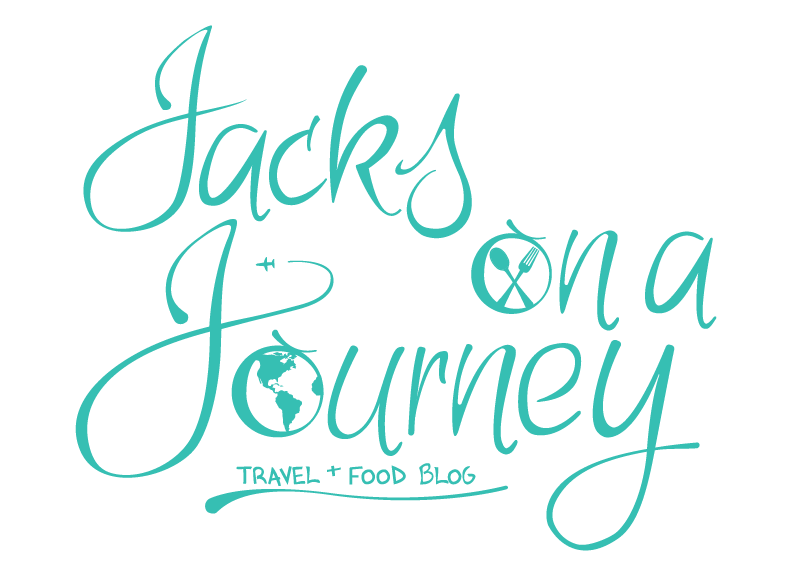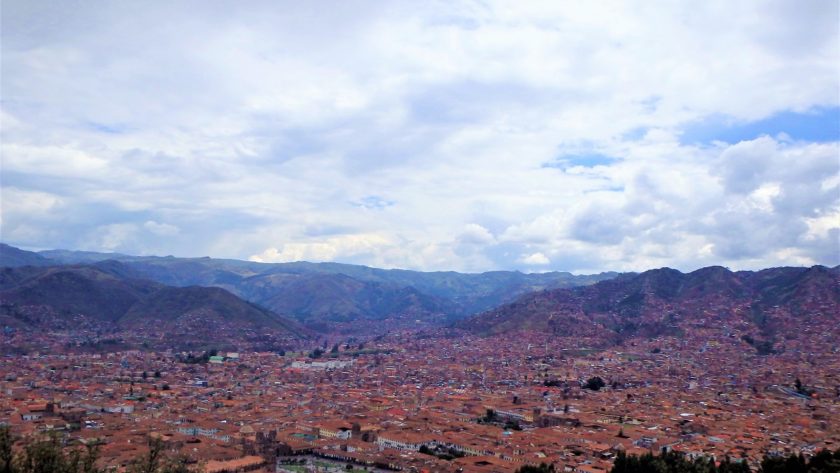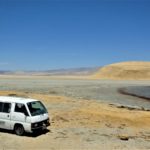As the gateway to the world-famous Machu Picchu, the majority of travellers that find themselves in Cusco, Peru do so solely to visit this designated ‘New Seven Wonders of the World‘ historical site.
The city of Cusco, as a destination itself, is often more of an after thought.
However, travellers to these dizzying altitudes of 3,400m (11,150ft!) might want to consider staying at least a couple of days more (unless travelling from La Paz, of course). No one wants to come all this way and have their bucketlist experience hindered by altitude sickness.
Despite a gradual acclimatisation from the coast to the Andes (via the Ica desert and Arequipa) we still decided to spend four days in Cusco, doing our best to soak up all it had to offer!
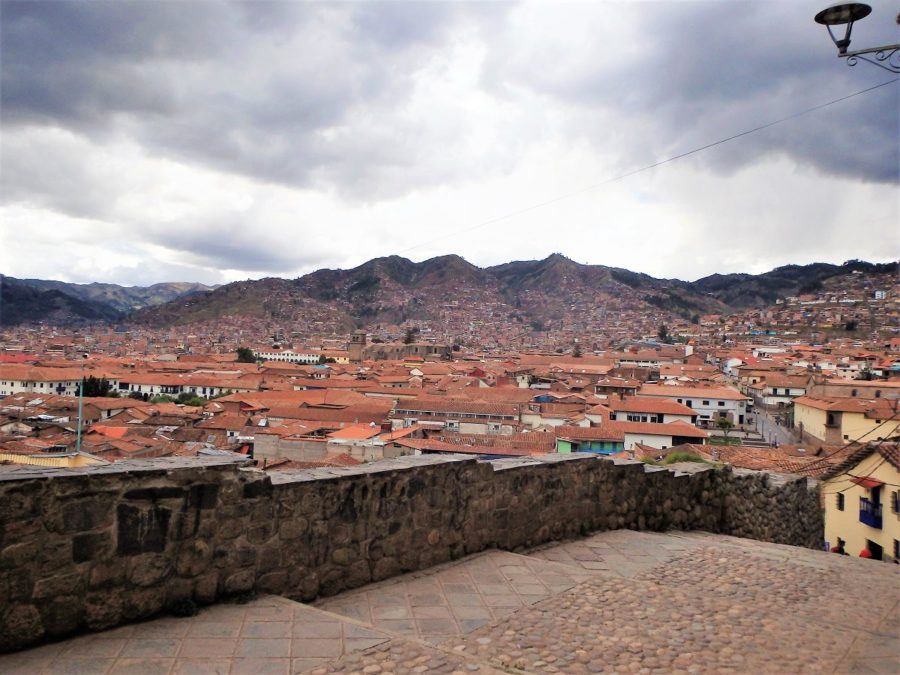
We were pleasantly surprised by just how much we like the city! As a hugely tourist-centric place, reviews tend to be quite varied and so we were apprehensive about what to expect.
Sure, there’s the minor annoyances of hagglers enticing visitors with their trinkets but what popular tourist destinations don’t have that?!
For us, Cusco captivated us with it’s colonial charm, fascinating history and undeniably picturesque setting nestled within the Peruvian Andes.
As such, we would encourage all travellers to take the time to explore this exciting city, not just simply pass through. This is why we have compiled a list of our favourite things to create our Backpackers Guide to Cusco, Peru 🙂
What to do in Cusco, Peru
#1 Learn the city’s history
Given it’s historical significance, Cusco is often referred to as Peru’s cultural capital.
From the early 1400’s up until 1533, the Inca Empire ruled a territory spanning from Quito to Santiago, and Cusco was it’s capital. It was the largest empire at it’s time and the largest ever to rule in the Americas!
We did some of our own very basic research before arriving but the best way to see the sights and appreciated their cultural value is by doing a free walking tour.
The tour
Our tour began at the central Plaza de Armas with just 5 other backpackers (the joys of quiet season!).
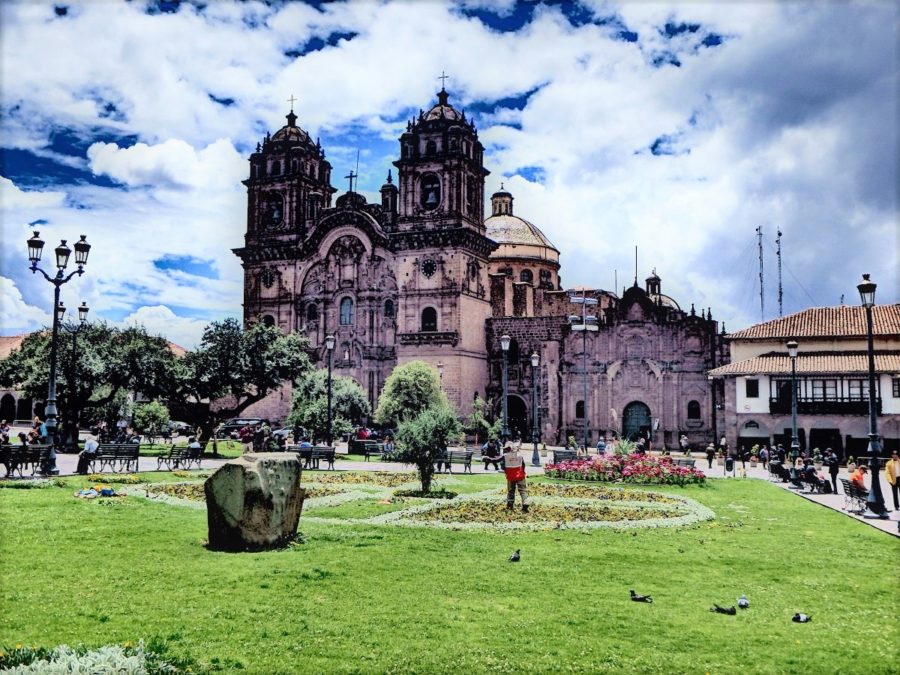
This very same central plaza was once the heart of the Inca capital. This is where ceremonies, sacrifices and celebrations would all take place. Crazy to imagine.
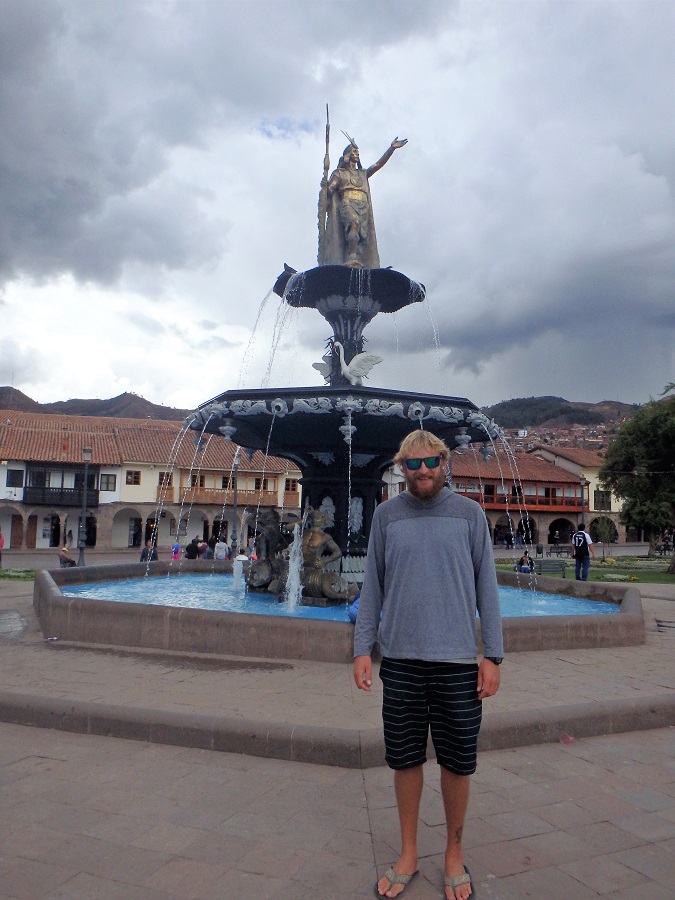
The Inca’s were deeply religious, worshiping a number of gods and even animals. The three animals they held sacred were the condor, puma and snake, each possessing a symbolic value for the Incas.
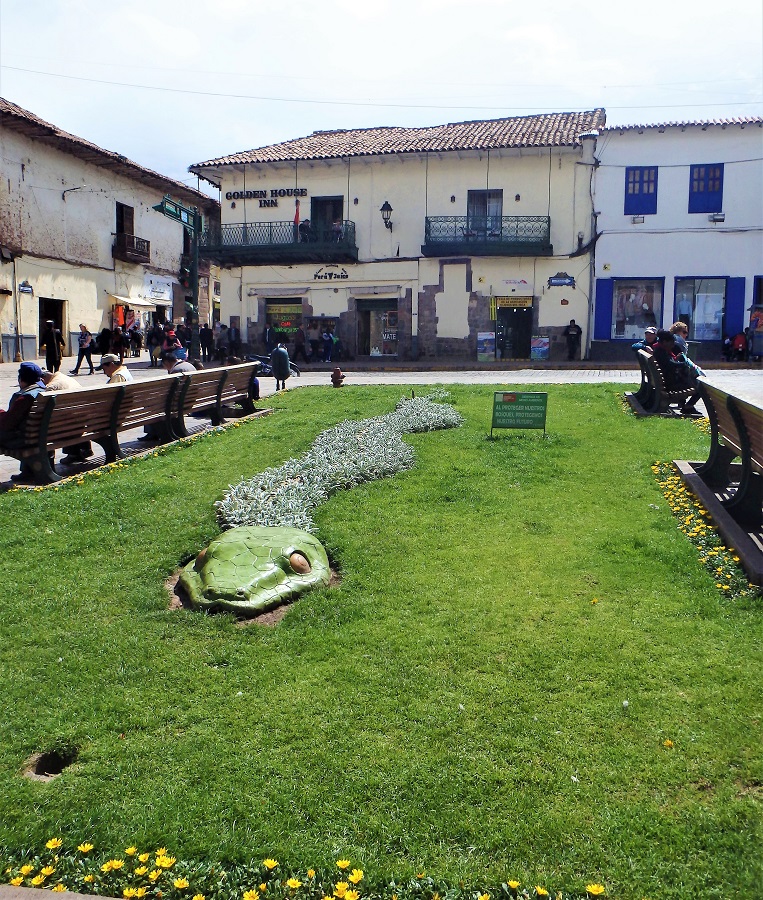
The puma symbolises the power of the Earth and is why Cusco was apparently built in the shape of one. If it wasn’t so clearly indicated, you might need to stretch your imagination to make it out…

When the Inca’s were conquered by the Spaniards in 1533, their palaces were torn down and Catholic churches built in their place.
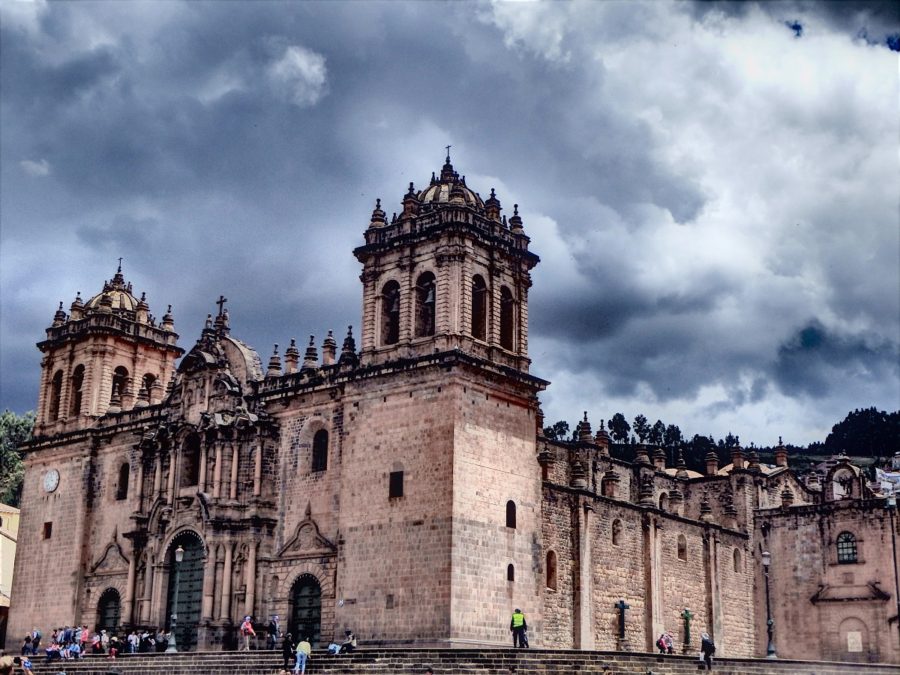
The Inca’s are revered, even today, for their impressive architecture. They constructed structurally-sound buildings that were able to withstand massive earthquakes!
A perfect example of Inca architecture (the 12-angled-stone) can be found down one of the city’s most beautiful streets, Calle Hatunrumiyoc.
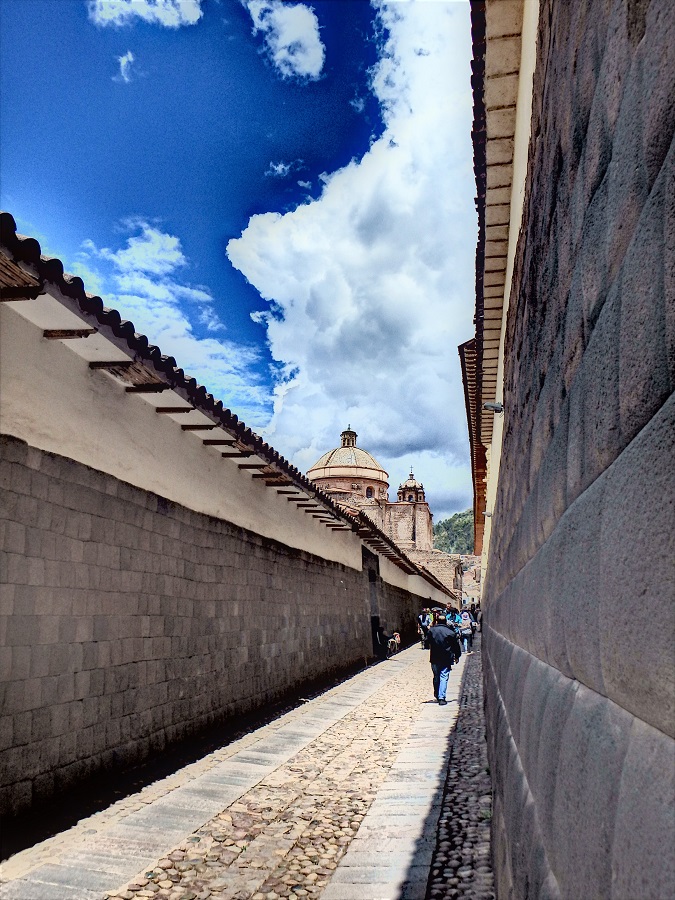
One of the last historical sites we visited was Kusicancha. This old Inca neighbourhood was only discovered within the last 12 years and shows how the city once looked. There are even full and partial remains of Inca skeletons discovered on display.
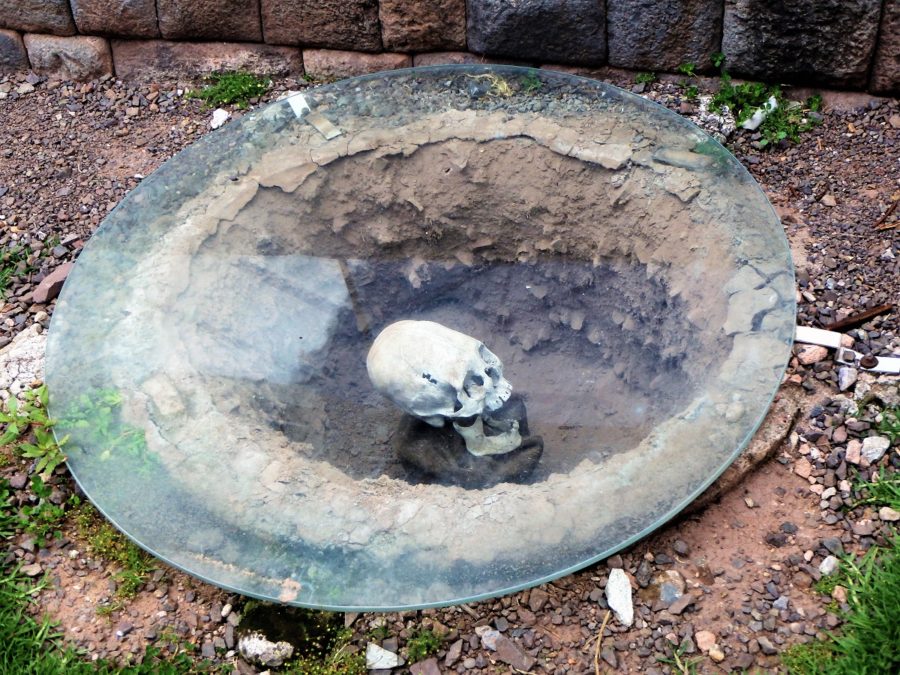
#2 Explore San Pedro Market
We discovered San Pedro market by following our stomachs. But there is so much more here than food.
As with most South American markets, San Pedro is a feast for the senses. The array of stalls here sell hot lunches, fruits, vegetables, clothes, bags and various nik-naks all in abundance!
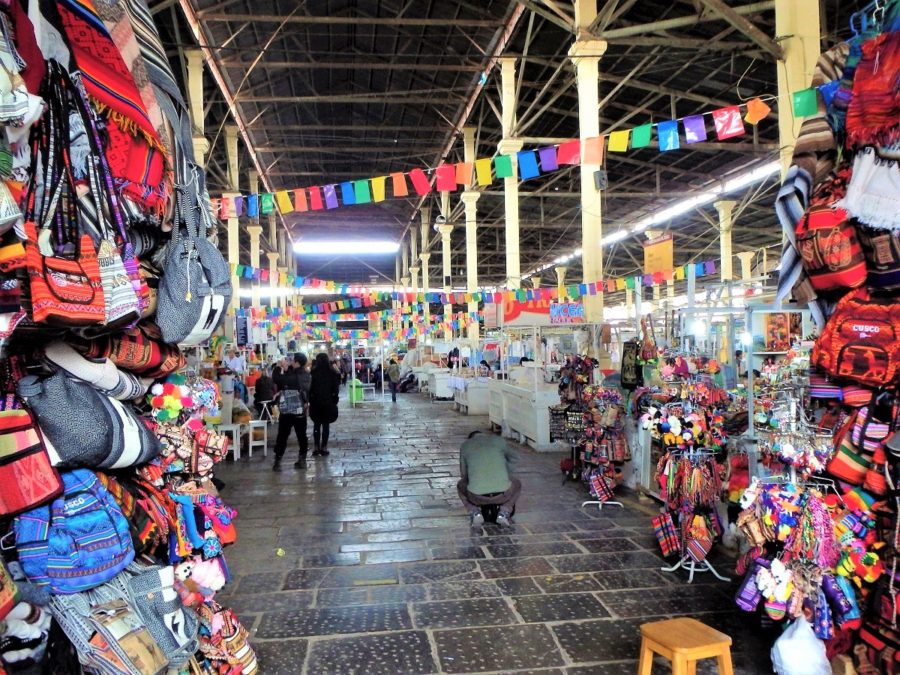
We love to just walk aimlessly and getting lost down the isles.
#3 Explore the streets of San Blas
Cusco’s northeast district of San Blas is a quaint neighbourhood steeped in colonial charm and a surprisingly hipster vibe. The area is massively popular with travellers to Cusco thanks to it’s art galleries, artisan cafes and boutique shops.
It’s not the cheapest place to shop for budget-savvy backpackers but worth the wander none the less. The white-washed buildings and narrow streets are simply beautiful.
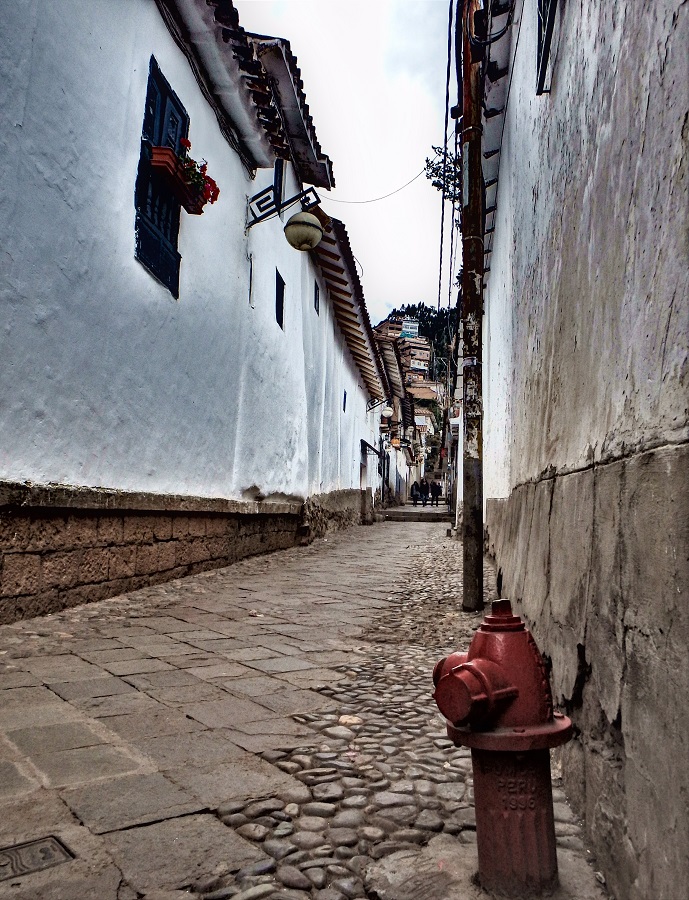
#4 Walk to Saqsaywaman
There appear to be many different spellings for this ancient Inca fortress, however the pronunciation of ‘sexy woman’ did not seem to be disputed, ha!
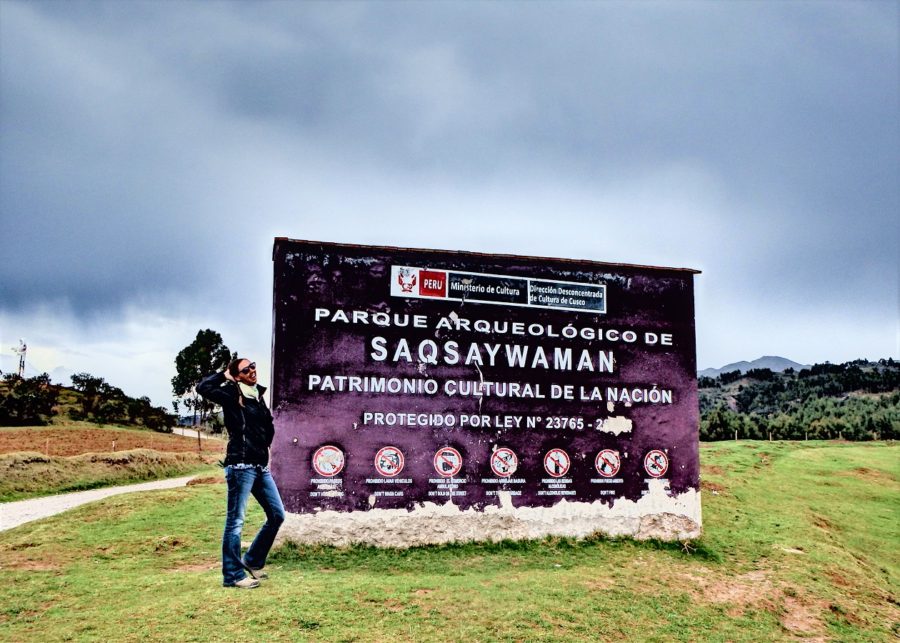
This particular historical site was an important storage and ceremonial site for the Incas. It is not the cheapest site to visit however, costing 70 soles ($21 USD) per person.
To get there, travellers may opt to take a 5-minute taxi or climb the stairs up the mountain. We recommend the latter, even if you don’t plan on entering the site.
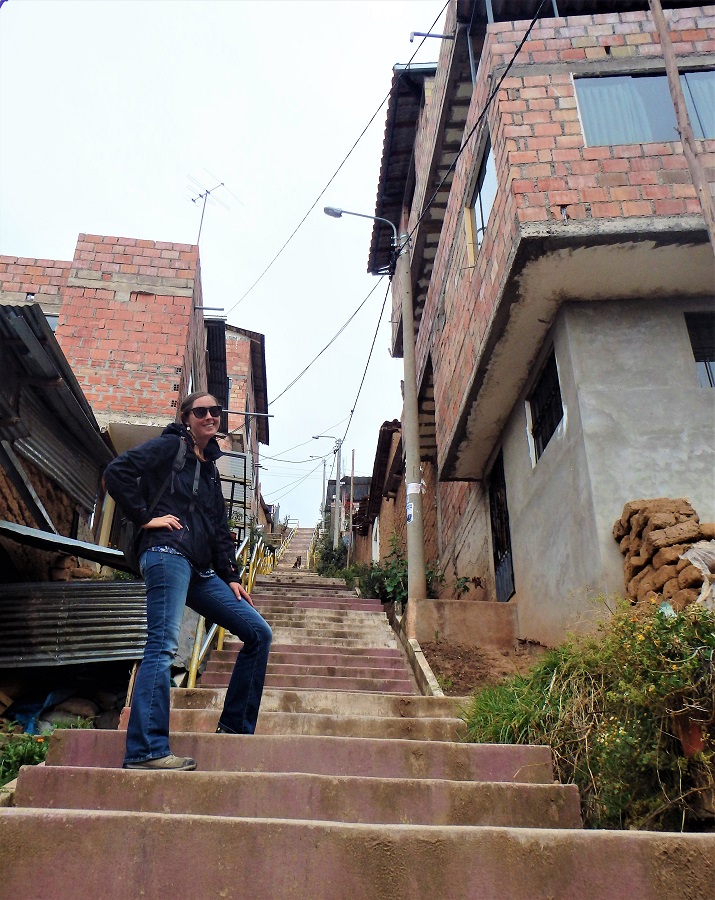
After several stops to catch my breath, we were pumped to make it to the top. The views make for a very rewarding challenge!
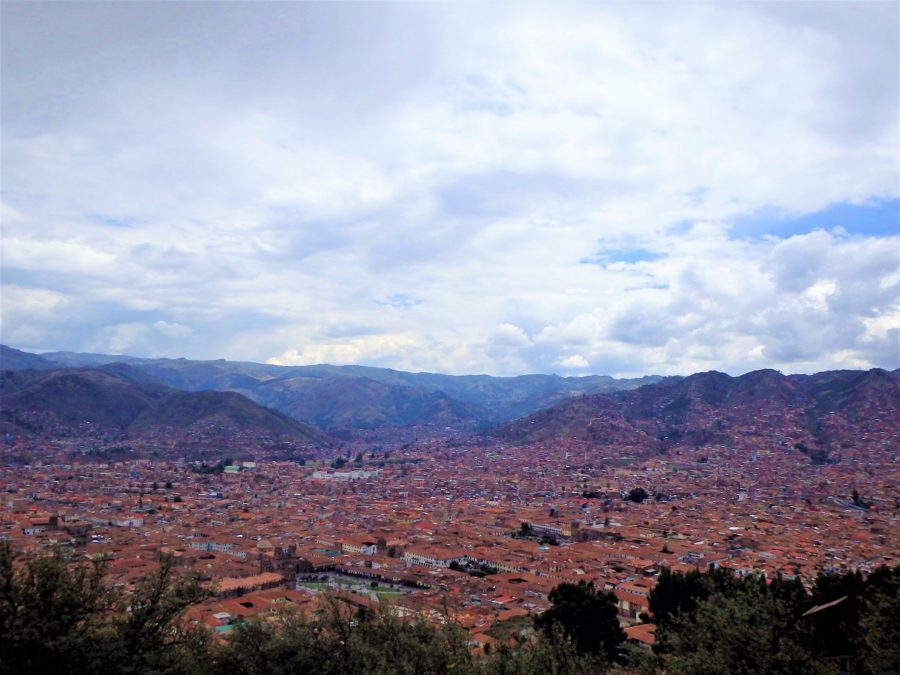
#5 Eat local food
It’s hard for us to reminisce about a place without thinking about the food we ate (although to be fair, it’s hard for us to think about much before food crops up in any circumstance, ha).
While we did most of our own cooking in Cusco (essential when travelling on a budget) we were still sure to indulge in their local street food on several occasions.
One of our favourites was a gem of a store along the edge of Plaza San Francisco.

Empanadas are always a must, as are papas rellenas. They are divine!
Part of the street food experience for us is the joy of local delights we can simply scoff on a park bench while watching the world go by.
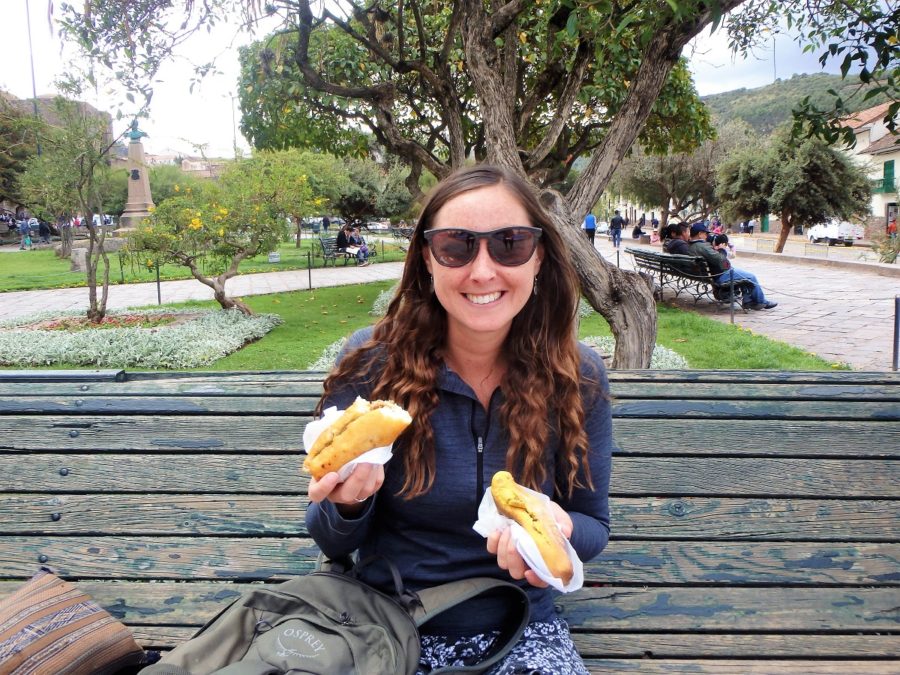
For a filling lunch, we favoured the local alumerzo specials offered across most of South America. An awesome spot we got recommended by several backpackers was surprisingly a vegan restaurant.
Located in San Blas, The Green Point is a humble-looking eatery that offers great value. It is hugely popular with queues out the door throughout most of its lunch service.
For their daily lunch special it included a small salad buffet, soup, a select main and a mini dessert at the end. All this was just 15 soles ($5 USD) each! It was so good and we left stuffed.

For more local delights on a backpackers budget, don’t forget to check out the aforementioned San Pedro market.
#6 Take a day trip
There are a number of day trips to historical sites accessible directly from Cusco.
Of course Machu Picchu is one of them, however many travellers prefer to make this a longer venture. Be aware that this can be a mission all on its own! Check out our Inca Jungle Tour to Machu Picchu blog for tips 🙂
Sacred Valley is another site of Inca ruins that is just 15km north of Cusco. Quite often tours here will include a stop at Saqsaywaman on the return journey.
While trips to the ruins are popular with travellers, the most-visited day trip from Cusco has to be Rainbow Mountain, known locally as Montaña de Siete Colores.
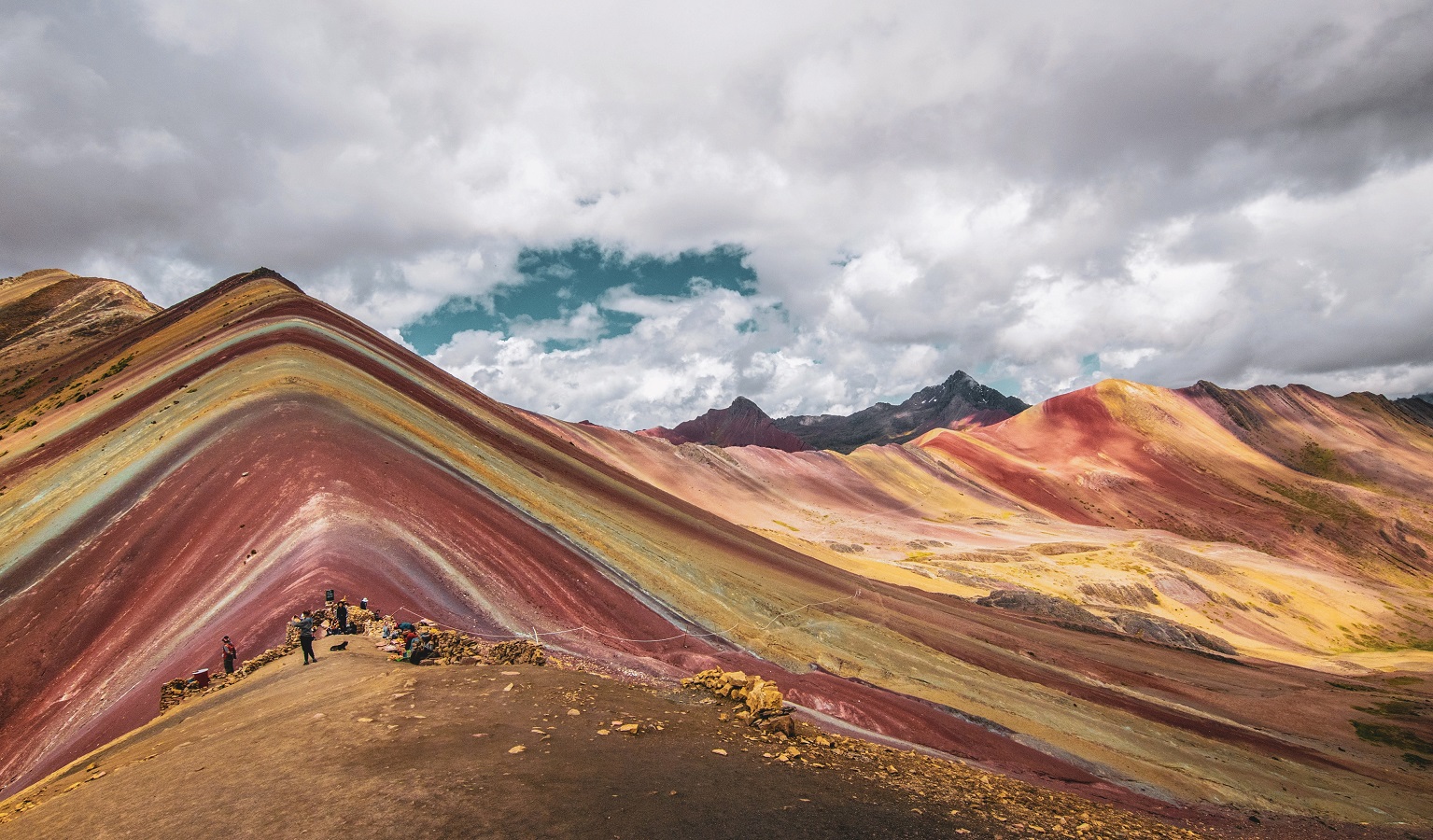
A one-day tour here typically costs around 100 soles ($30 USD) per person.
While the cost certainly isn’t unreasonable, it was more the altitude that put us off. The trek is well-known for being a struggle for even the most athletic travellers as you breach over 5,000m!
I could have got on board except it really wasn’t the season for it. A friend we made did the trek and said it was basically a blizzard up there! However he still enjoyed, so it just shows it’s as good as you make it!
What not to do
#1 Don’t photograph lone alpacas
I figured this had to be included as I got caught unaware.
In both Peru and Bolivia we would occasionally spot locals standing around with a single alpaca or llama. This was probably most prevalent in Cusco, given it’s high volume of tourists, as the animal is a way to make money.
Put simply, you pay to take a photo.
When we were on our walking tour I noticed a lone alpaca just standing on the street (I didn’t realise it was tied up either). Thinking it was strange but funny, I snapped a quick photo.
I had barely taken my finger off the clicker when a local Andean woman jumped out from a doorway with her hand open, asking for money. I was quite startled but of course I gave her a couple of soles.
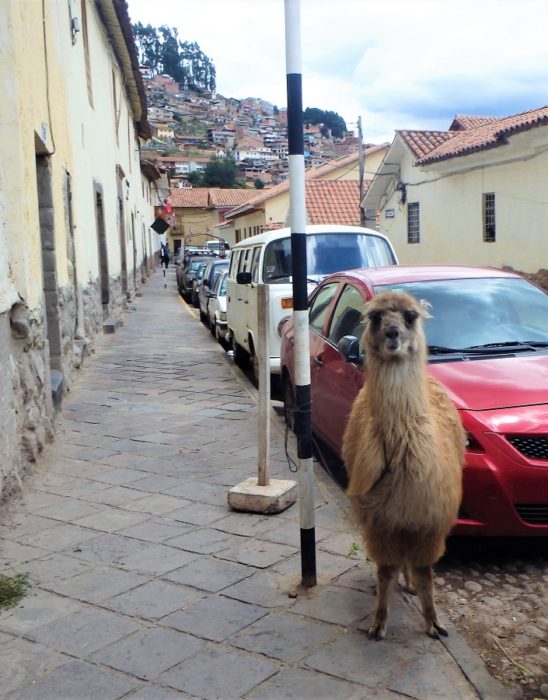
Rhys was cracking up, saying it was an ambush for ignorant tourists (like myself). Either way we laughed about it then and still now, ha!
#2 Don’t drink too much
Cusco caters to it’s diverse range of tourists that pass through, including backpackers looking for a good night out. Some of the hostels make it so you don’t even have to leave to find a party. The Wild Rover is one of those places.
We were lucky enough to be in Cusco when the Peru v. New Zealand World Cup qualifier game was being played. Almost everywhere would have been a good place to watch the game – the central plaza’s all over Peru were insane!
But we got talked into watching the game at the Wild Rover with a couple of friends. We had an incredible night and the atmosphere was insane when Peru finally claimed victory!
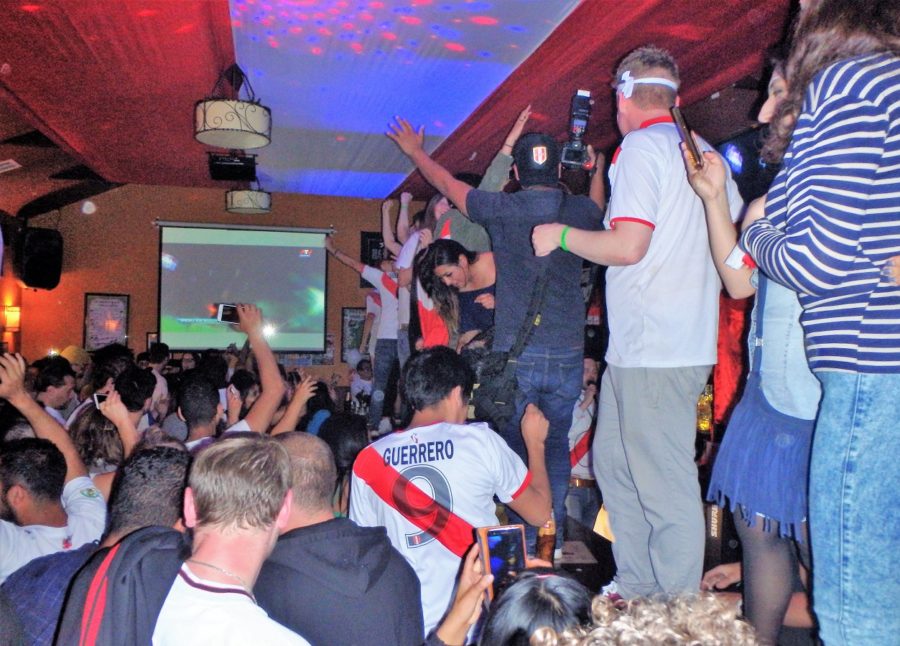
For us, it meant a heavy night and a very bad head the next day.
I have had bad hangovers but this was a contender for one of the worst. I already new altitude accelerates the getting drunk process. What I did not know, was that it also enhanced the suffering of a hangover. Just something to be mindful of when the liquor is flowing freely.
How to get to Cusco
The two most common ways to reach Cusco is via bus or flight. Even if cost is not an issue, you might want to re-think the latter. This is again purely to do with altitude.
It is not uncommon for travellers to feel the effects when going straight to 3,400m. Although a few rest days should hopefully right any issues.
As we were making our way south through Peru to Bolivia, we kept it cheap by getting the bus. Our ride from Arequipa took just over 10 hours and cost us 75 soles ($23 USD) each.
Tip: If you are able to plan ahead and book the bus a day or two in advance then quite often you will get your choice of seats. Our 10 hour bus ride was great as we got the top floor behind the stairway. A great alternative to the, more expensive, first class downstairs!
We met a couple of people who were on a tight schedule and had made their way directly from Lima by bus. Taking roughly 22 hours this journey can range in price from $30 – $50 USD. Still much cheaper than a flight!
